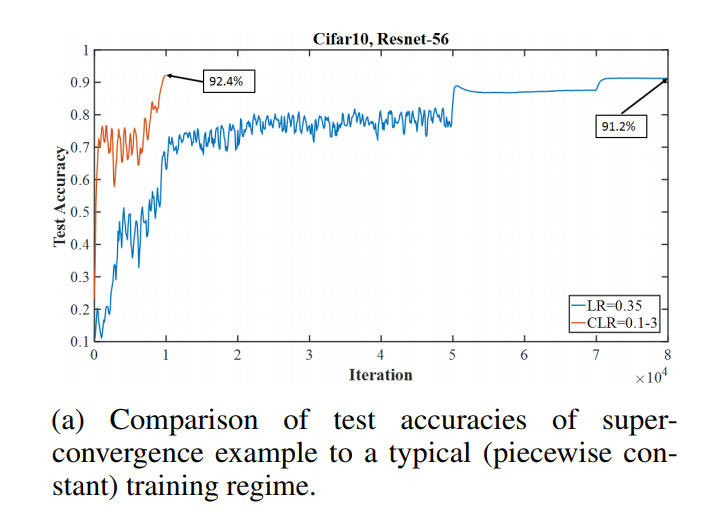-
Notifications
You must be signed in to change notification settings - Fork 29
New issue
Have a question about this project? Sign up for a free GitHub account to open an issue and contact its maintainers and the community.
By clicking “Sign up for GitHub”, you agree to our terms of service and privacy statement. We’ll occasionally send you account related emails.
Already on GitHub? Sign in to your account
Unable to reproduce Fig 1A #2
Comments
|
I should note that I originally attempted to reproduce this work in Tensorflow here. However, after achieving similar results I wanted to sanity check that I could at least reproduce the results with the provided Caffe code. |
|
From the paper:
The current super-convergence/architectures/Resnet56Cifar.prototxt Lines 113 to 116 in 45330fd
Are these correct? Are there any other changes to the network I should make before trying to reproduce? |
|
Josh, Thank you for your efforts at reproducing our results. I hoped it would be much simpler to do. You might take a look at the x.sh file. I created that shell script to make modifications to the files and submit them to our GPU system. It shows the change to moving_average_fraction from 0.999 to 0.95 for Figure 1. This script might answer some of your questions. Based on your comments, I plan to upload the output for a job that created the super-convergence run for Figure 1 (my server is currently down). That should help answer your questions and make reproducing the results easier. Thanks, |
|
@lnsmith54 Thanks! I'll take a look and I'll review the script in closer detail tomorrow. If I am able to reproduce after making these changes I'll be sure to make corresponding edits on OpenReview as well. I'll let you know how it goes. |
|
Josh, I've uploaded the output files to a new results folder. Please look at the clr3SS5kFig1a file for your reference. Good luck and I look forward to hearing how it goes. Leslie |
|
Your CLR curve looks qualitatively similar to mine. It is my guess that running with 8 GPUs makes a major difference and you won't be able to reproduce the CLR results without similar hardware. Please prove me wrong! |
|
One difference I've noticed is: The super-convergence/Results/clr3SS5kFig1a Lines 144 to 156 in ecc5615
The super-convergence/architectures/Resnet56Cifar.prototxt Lines 68 to 92 in ecc5615
Should I be removing these params when reproducing? |
|
That is curious. The params should be there. My server has been down all week but when my server is fixed, I will rerun this example with the Resnet56Cifar.prototxt just to double check this. |
|
Sounds good. In the meantime, I've updated my reproducibility report with these stronger results. Thanks for your help! |


I'm trying to reproduce evidence of superconvergence in Figure 1A shown below:

I am using the following values for the
solver.prototxtI have implemented
triangularcyclical learning in Caffe as specified here.I am using
Resnet56Cifar.prototxtas the network.I am achieving final training accuracy of ~90% but final test accuracy as low as 10-20%.
I note that the paper specifies that you achieve these results with large batch sizes of ~1,000 images. However, I wouldn't expect smaller batch sizes (125, as specified in
Resnet56Cifar.prototxt) to completely destroy the results.Are there any additional steps I must take to reproduce this work?
The text was updated successfully, but these errors were encountered: